With their slender and elegant physique, soulful eyes, and charming demeanor, it’s easy to see why Italian Greyhounds have captured the hearts of dog lovers for centuries. But these captivating canines are more than just a pretty face – they also possess a distinctive temperament that makes them a joy to live with.
In this article, we’ll deeply understand the Italian Greyhound’s gentle, sensitive, and affectionate nature. We’ll uncover what makes them tick, their potential behaviors, and tips for nurturing these delightful pups. Whether you’re considering adding one of these charismatic dogs to your family or are just curious to learn more, read on to gain insight into the Italian Greyhound temperament.
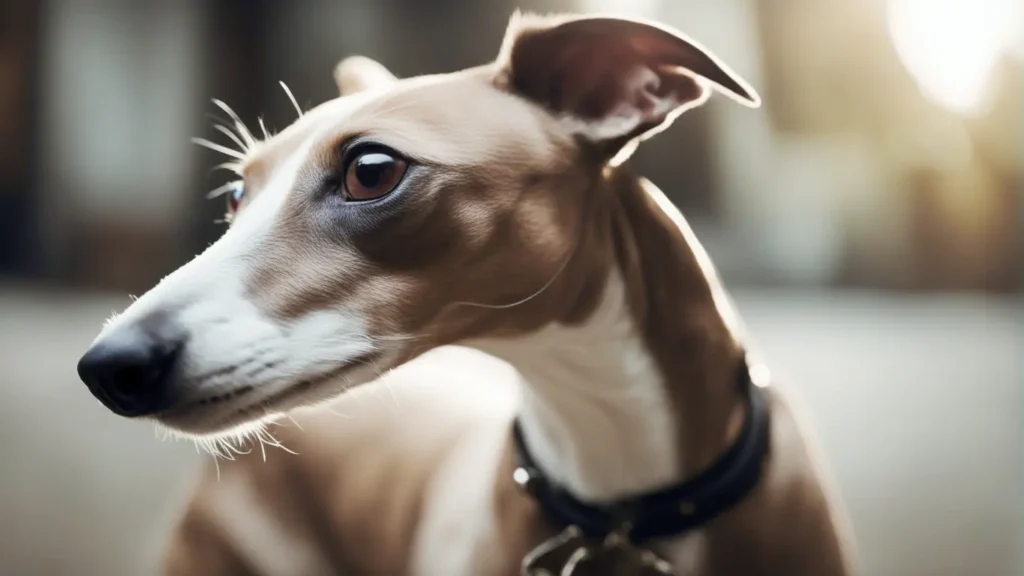
Table of Contents
- 1 An Overview of the Italian Greyhound Temperament
- 2 The Italian Greyhound’s Gentle, Docile Nature
- 3 The Sensitive Nature of Italian Greyhounds
- 4 The Deep Devotion and Attachment of Italian Greyhounds
- 5 Catering to the Energetic Side of Italian Greyhounds
- 6 The Intelligent and Trainable Nature of Italian Greyhounds
- 7 The Reserved Nature of Italian Greyhounds Around Strangers
- 8 Tips for Nurturing Your Italian Greyhound’s Unique Temperament
- 9 Frequently Asked Questions About the Italian Greyhound Temperament
- 10 Related posts:
- 11 Are Italian Greyhounds Hypoallergenic? Find Out Now!
- 12 The Ultimate Guide to Adopting an Italian Greyhound Puppy
- 13 Italian Greyhound: The Ultimate Breed Guide
An Overview of the Italian Greyhound Temperament
While individual personalities can vary, Italian Greyhounds generally share some common temperament traits that define the breed. Here’s a quick overview:
- Gentle – Italian Greyhounds tend to have a docile, mild-mannered nature. They rarely exhibit aggressive behaviors.
- Sensitive – These dogs are highly intuitive and responsive to their environment and handlers. The harsh treatment profoundly affects them.
- Affectionate – Italian Greyhounds form intensely strong bonds with their owners. They crave love, attention, and close human companionship.
- Energetic – Italian Greyhounds need plenty of daily activity and exercise despite their dainty frame. They thrive on playtime and interaction.
- Intelligent – This breed is smart and highly trainable, especially with positive reinforcement methods. However, their attention span can be short.
- Independent – Italian Greyhounds can sometimes be stubborn and selective about obeying commands. They exhibit more independence than other breeds.
- Reserved – While friendly and social when adequately introduced, Italian Greyhounds tend to be quiet and reserved around strangers compared to more outgoing breeds.
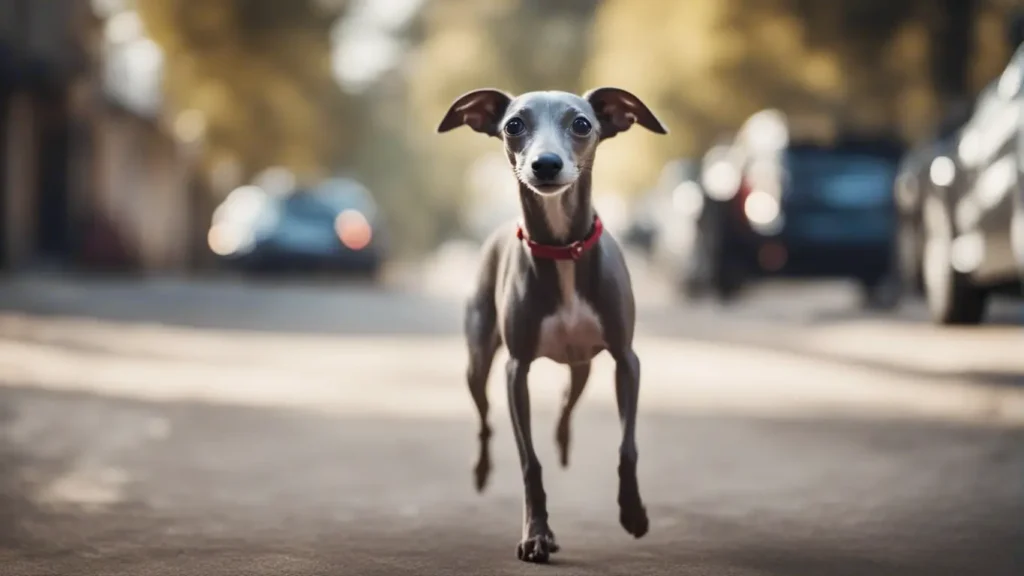
A holistic understanding of the Italian Greyhound temperament will enable you to better care for and bond with these special pups. Next, let’s explore some of their critical traits in greater depth.
The Italian Greyhound’s Gentle, Docile Nature
One of the most noteworthy aspects of the Italian Greyhound temperament is its inherently gentle and docile nature. This breed thrives on forming close connections with their human handlers. Unlike some dogs that may exhibit domineering behaviors, Italian Greyhounds are polite, well-mannered, and rarely aggressive.
This peaceful and peace-loving personality made Italian Greyhounds favored companions amongst nobility and aristocracy for centuries. Their tranquility and decorum allowed them to fit smoothly into dignified environments without causing disruption.
While every dog is unique, this baseline gentle temperament means Italian Greyhounds generally integrate into homes and families with grace and ease. Their polite, tranquil disposition makes them a joy to have around children, visitors, or other pets when properly socialized.
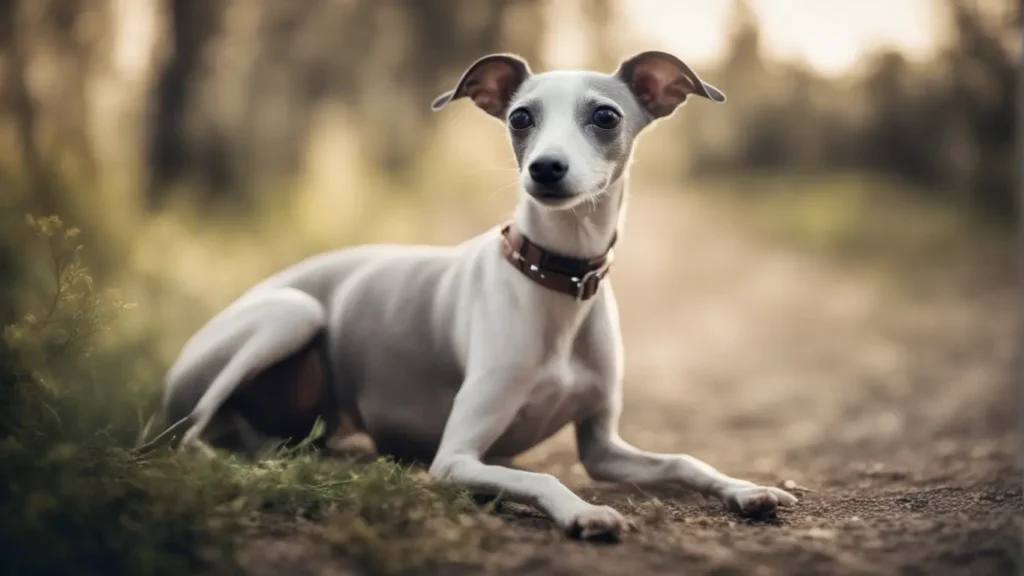
However, it’s important to note that their mild-mannered nature does not mean Italian Greyhounds have low exercise needs. On the contrary, they require plenty of daily activity and playtime. An inactive Italian Greyhound left alone for long periods may exhibit undesirable behaviors like excessive barking or digging due to boredom. Despite their calm demeanor, meeting their regular interaction and stimulation needs is critical.
The Sensitive Nature of Italian Greyhounds
Italian Greyhounds are susceptible dogs, both physically and emotionally. Their thin skin and lean bones mean they are more fragile and prone to injury than other breeds if handled roughly. Additionally, their sensitive temperament means they do not respond well to stern verbal corrections or punitive training methods.
This breed forms close bonds with its owners and aims to please them. Any perceived harshness, whether through yelling, scolding, or physical punishment, can lead to fear, distrust, and anxiety. At the first sign of stress, an Italian Greyhound may cower, tremble, or lose bladder control.
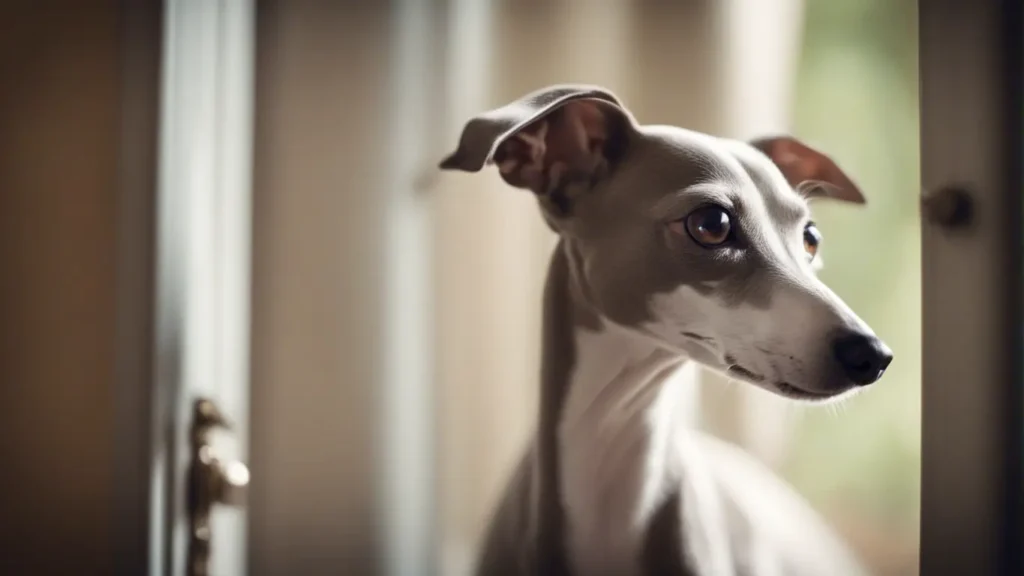
Because of their vulnerable temperament, positive reinforcement is the ideal training approach for Italian Greyhounds. Reward-based techniques with ample praise and treats will motivate them to learn quickly while strengthening your mutual affection and respect. Consistency and patience also yield the best results.
The sensitive nature of Italian Greyhounds extends beyond just training. They tend to be intuitive and in tune with their owner’s emotions through body language and energy. They will pick up on it and mirror those emotions if you are stressed or angry. Staying calm and reassuring your Italian Greyhound with affection during stressful situations helps avoid exacerbating their apprehensive tendencies.
Living happily with this breed means providing an environment rich in warmth, gentle guidance, and reassurance. With proper care tailored to their sensitive personality, Italian Greyhounds flourish.
The Deep Devotion and Attachment of Italian Greyhounds
One of the most distinguishing features of the Italian Greyhound temperament is their unyielding devotion and attachment to their human owners. This breed thoroughly enjoys being constantly by their person’s side. Italian Greyhounds’ deep affection often translates into becoming a cherished shadow or “velcro” dog, always following you from room to room.
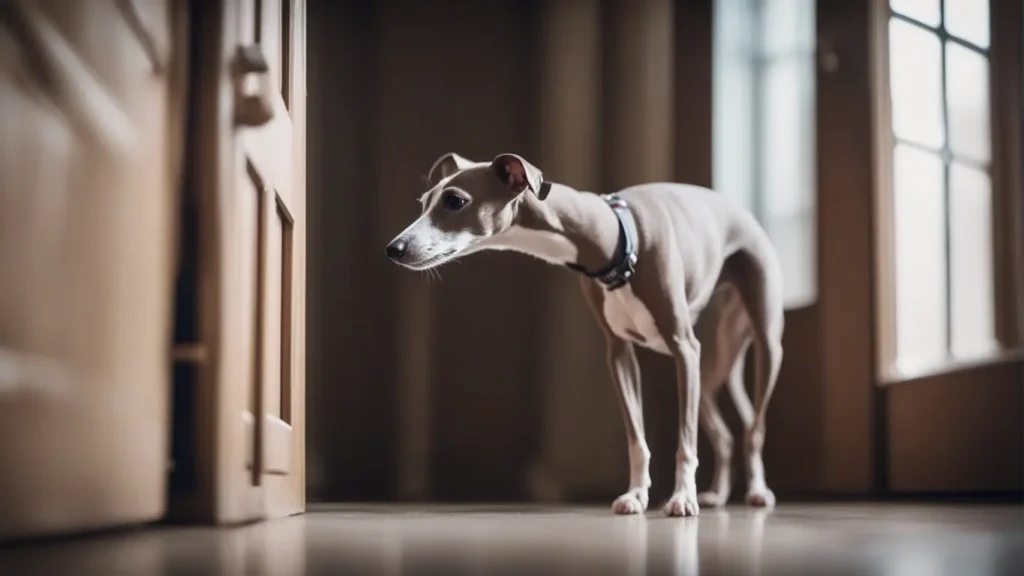
This intense loyalty stems partly from Italian Greyhounds being explicitly bred as companion animals for centuries. Their purpose has always centered on providing human affection, comfort, and friendship.
As a result of this close bond, Italian Greyhounds crave constant love and attention from their owners. They could do better left alone for extended periods. Separation anxiety is common among this breed if they feel neglected. Symptoms may include depressed behavior, destructiveness, excessive barking, or “clinginess” upon your return.
Providing your Italian Greyhound with companionship is vital to their happiness. If you work long hours, consider having a friend or family member stop by to check on them or take them to doggy daycare. Bringing home two Italian Greyhounds can also allow them to entertain each other. Daily hours of dedicated one-on-one time, play, training, and cuddling will fulfill their devotion quota.
With proper care and understanding of their clingy tendencies, you’ll find that an Italian Greyhound’s endless affection and loyalty greatly enrich life as a cherished family member. This breed perfectly fits the bill for owners prioritizing close companionship with their dogs.
Catering to the Energetic Side of Italian Greyhounds
One aspect of the Italian Greyhound temperament that surprises first-time owners is their energy and athleticism. Do not let their dainty physique fool you – this breed needs plenty of daily physical activity and mental enrichment.
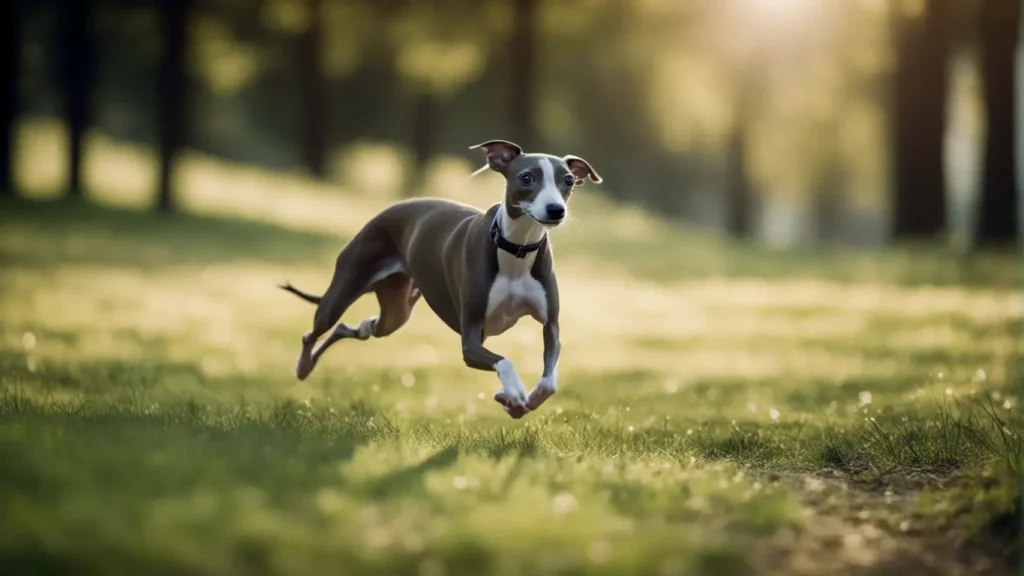
Italian Greyhounds love running full speed within a securely fenced area. Their heritage as sighthounds bred to spot prey makes them natural athletes with an inborn desire to chase. They excel at canine sports like agility and lure coursing that satisfy their instincts.
Even without access to wide open spaces, Italian Greyhounds require at least 30-60 minutes of daily exercise, whether on leashed walks, playing fetch in the yard, or free time to zoom around indoors. Engaging toys that make them think and move also tap into their energetic nature. Rotating puzzle feeders, treat balls, ropes, and squeaky toys prevents boredom.
An Italian Greyhound that does not receive sufficient outlets for their energy may resort to undesirable behaviors like excessive barking, digging, furniture chewing, or potty accidents. Making exercise and playtime a priority is critical to avoiding negative behaviors rooted in boredom.
With the proper stimulation and training, however, you can positively channel your Italian Greyhound’s lively temperament into fun activities you enjoy, strengthening your bond. Their exuberant spirit keeps life exciting for Italian Greyhound owners committed to providing proper care.
The Intelligent and Trainable Nature of Italian Greyhounds
Despite their independent streak, Italian Greyhounds are brilliant dogs that thrive on training activities that challenge their minds and bodies. This athletic breed is very trainable and responsive to positive reinforcement methods. Their sensitivity, however, means specific considerations should be made.

Italian Greyhounds have a strong desire to please their owners. Motivational training that heavily incorporates praise, play, and food rewards taps into their eagerness to impress you. Clear communication, patience, and consistency are key when teaching new behaviors.
Their shorter attention span means brief training sessions, around 10-15 minutes max, with new tasks introduced progressively in small increments. Mixing obedience work with fun games or socialization activities keeps them engaged. Practicing commands in different environments also strengthens their retention.
Avoid harsh corrections or punishment that may damage the trust of your sensitive Italian Greyhound. Yelling, scolding, or physical discipline shuts down their ability to learn. If you encounter defiance or stubbornness, pause the session and try again later in a positive manner.
While highly trainable overall, Italian Greyhounds can be selective listeners when commands conflict with their desires. Their independent thinking means they may only sometimes obey reliably off-leash. Maintaining focus and motivation is vital to overcoming lapses in compliance.
When handled with an understanding of their sensitive personality, Italian Greyhounds blossom under positive training. Their receptiveness to reward-based techniques makes training sessions an excellent opportunity to deepen the bond with your dog.
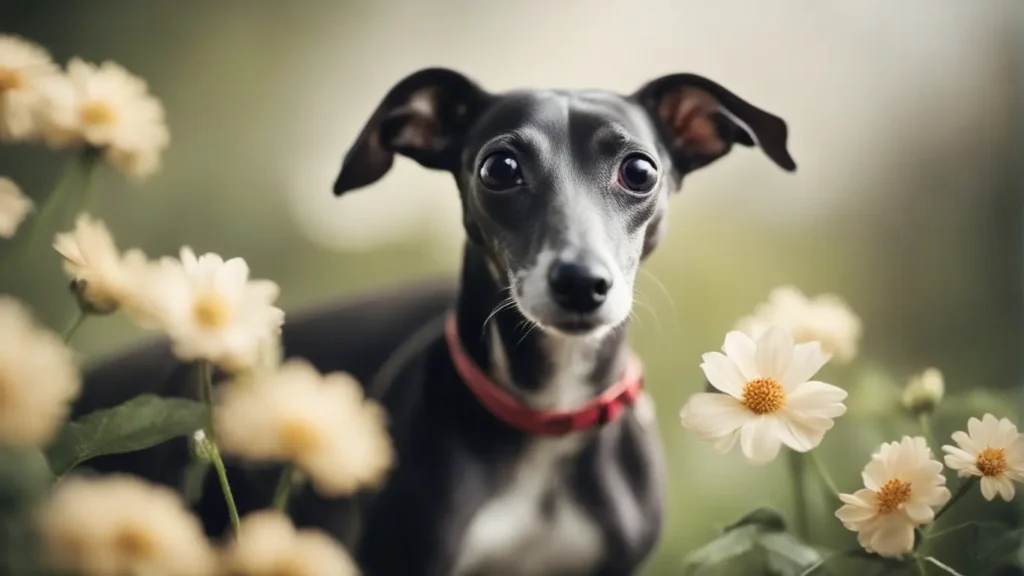
The Reserved Nature of Italian Greyhounds Around Strangers
Unlike some dogs that love greeting everyone as a new friend, Italian Greyhounds tend to be more reserved when initially meeting strangers. They are often described as “standoffish” upon first introduction. However, this wariness should not be misunderstood as aggression. Italian Greyhounds are more discerning and slower to warm up to new people.
With early socialization and controlled positive exposures, Italian Greyhounds usually overcome their natural timidity and learn to enjoy human companionship beyond just their immediate family. Maintaining politeness and letting them set the pace for getting acquainted with strangers prevents them from becoming overwhelmed.
It’s also essential to respect their reserved nature by providing a safe space, like a crate or corner of a room, where your Italian Greyhound can retreat when it feels shy or overstimulated by visitors. Pushing them to interact before they are ready can heighten their stress.
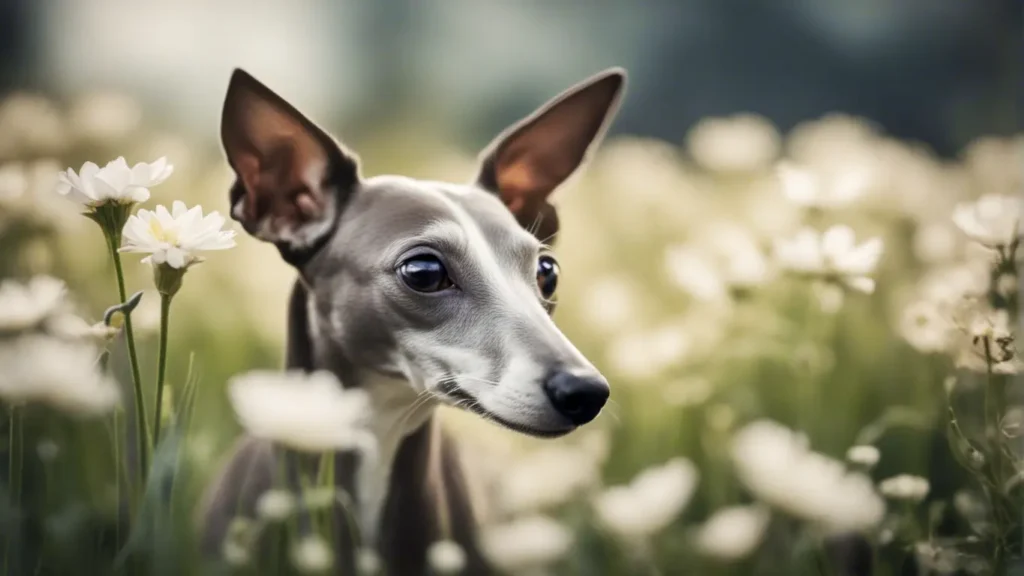
While discerning, most Italian Greyhounds appreciate tactful human touch once comfortable with someone’s presence. Gentle petting and scratches help them overcome their initial caution once they have had time to observe and sniff out the situation.
Ultimately, the reserved tendencies of Italian Greyhounds protect them from perceived threats. With positive exposure and respect for their boundaries, they become devoted and loving companions to their inner circle of family and friends.
Tips for Nurturing Your Italian Greyhound’s Unique Temperament
Now that we’ve explored the myriad traits that make up the Italian Greyhound temperament let’s discuss some tips for nurturing these delightful pups:
- Provide plenty of affection, playtime, and training to satisfy their high needs for companionship and activity. They thrive on one-on-one attention.
- Use only positive reinforcement and motivational training methods. Never yell or punish an Italian Greyhound.
- Socialize them slowly and gently to build their confidence around strangers and new environments.
- Give them opportunities to run safely off-leash in a fenced area to fulfill their sighthound instincts.
- Offer puzzles treat balls/toys to engage their agile minds and prevent boredom.
- Monitor their stress levels and allow them to retreat to a safe space when overwhelmed.
- When alone, address separation anxiety through gradual conditioning, companionship, and enrichment toys.
- Schedule regular veterinary check-ups to catch any health issues early and maintain preventative care.
- Provide jackets/sweaters outdoors in colder weather, given their thin coat and sensitive skin.

By fully understanding the unique temperament of Italian Greyhounds, you can nurture a fulfilling relationship built on trust and tailored care for these special dogs. They will reward you with endless devotion, playfulness, and love for years.
Frequently Asked Questions About the Italian Greyhound Temperament
For those considering adding one of these elegant pups to your family, you likely have plenty of questions about their personality traits and behaviors. Here are some commonly asked questions about the temperament of Italian Greyhounds:
Are Italian Greyhounds good with young children?
Italian Greyhounds can thrive in families with older, gentle children who understand how to interact with them appropriately. However, their fragile build makes them less suitable for homes with young, rambunctious toddlers who may accidentally injure them.
Do Italian Greyhounds get along with other pets?
Italian Greyhounds generally get along very well with other domestic pets when socialized early on. However, their high prey drive means they may instinctively chase small animals outside the home, like squirrels or birds. Proper leash handling and training help control these impulses.
How much exercise do Italian Greyhounds need each day?
Italian Greyhounds are energetic and require at least 30-60 minutes of daily activity. This can include leash walks, free running/play in secure areas, interactive games with toys, or participating in canine sports that satisfy their instincts.
Are Italian Greyhounds easy to train?
Italian Greyhounds are highly trainable dogs, especially when using positive reinforcement and motivational methods. Their sensitivity means they do not respond well to harsh corrections. Keeping training sessions short, varied, and rewarding yields the best results.
Do Italian Greyhounds bark excessively or suffer from separation anxiety?
Italian Greyhounds are quiet dogs indoors, not prone to excessive barking without cause. However, they are prone to separation anxiety if left alone for long periods without proper conditioning. Providing companionship and enrichment helps prevent stress.
The Italian Greyhound is a complex breed with a unique temperament that draws in admirers worldwide. Understanding their endearing qualities and potential challenges lets you decide if one of these captivating hounds fits your lifestyle. The Italian Greyhound temperament fits the bill beautifully if you crave an affectionate, elegant dog that thrives on human companionship.